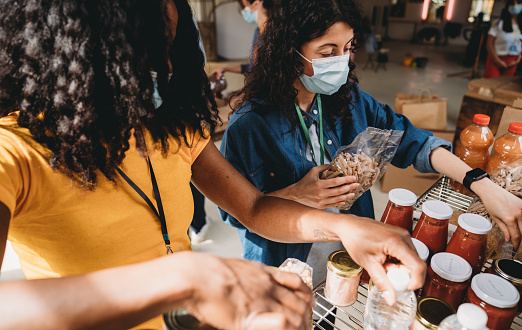[the_ad id=”476″]
In this article, we will see that, on the whole, conflict in Africa has marginalised by outside policymakers when compared to other conflicts in the world. Measures may be taken in response to conflict, but they almost invariably fall terribly short in terms of the scale (particularly in comparison with the needs) and the timeliness. In short responses have been too little, too late. Since the problematic intervention in Somalia in the early 1990s, a dominant theme (particularly emphasised by the USA) has been that there should be ‘African solutions for African problems’.
Diplomacy

Policymakers have the ability to influence conflict through diplomacy. They may ensure that attention is paid to a conflict, apply pressure on the parties involved, or bring the parties together in mediated peace negotiations.
Policymakers can draw attention to a conflict (even without engaging in other forms of concrete measures) through public statements. A look at the homepage of the US Department of State, for example, can give us an idea on what issues are important to that country. Under the heading of ‘Issues and Press’, links to conflicts and issues in Afghanistan, Darfur, Iran, Iraq, Middle East peace, and North Korea can be found (US State Department, December 2006).
The UN also displays links to prominent issues on its homepage. A check in May 2003 as well as in July 2006 found links to Iraq, the Mideast Roadmap and action against terrorism. We can also compare the number of statements released. The Ministry of Foreign Affairs of Japan, for example, released 27 statements on the issue of the DRC between 2000 and 2006, while over the same period it released 214 statements on the issue of Palestine.
Applying pressure on parties to conflict (and much of other diplomacy) is usually not a transparent affair, and its success often depends on it being hidden from the public eye. For this reason, it is extremely difficult to determine to what extent policymakers have been involved in actively responding to conflict in Africa using these means.
We do know, however, that behind-the-scenes diplomacy by the USA was a major factor in the peace agreement over southern Sudan. In many ways, however, much of behind-the-scenes diplomacy appears to be aimed at protecting the interests of the outside state, rather than necessarily resolving the conflict. This can be seen in the French support for the Rwandan regime in the lead up to the genocide, and in the continued support by the US and the UK to Rwanda and Uganda as they invaded the DRC (Zaire) twice.
Outside involvement in bringing parties together in mediation attempts has been notably absent in Africa. The type of high-level mediation seen in the Middle East (at US Presidential level) and in the Balkans is not seen in Africa. Mediation by France in largely unsuccessful talks between the parties to conflict in Cote D’Ivoire in 2003 is one exception.
Those taking on the role of mediator in African conflicts are usually African, such former Botswana President Masire in the DRC, former Tanzanian President Nyerere and later former South African President Mandela in Burundi. Standing presidents from Nigeria, South Africa and Libya have also tried their hand at mediation. While such African initiatives are certainly to be welcomed, the ‘carrots and sticks’ that Western mediators can bring to bear in encouraging a settlement are considerably greater, provided that the interests of such mediators do not endanger the process.
Humanitarian Aid

Measuring humanitarian aid is not an easy task. Donors provide aid through many channels, and there is considerable controversy over what should be considered as humanitarian aid. Some countries, for example, include the costs for settling refugees in their own countries as foreign aid., and in many aid projects, more than half of the allocated budget is for expatriate salaries and home country administration costs. It should also be noted that while it is indeed a response to conflict or other humanitarian disaster, humanitarian aid is typically not designed to resolve conflict, rather it is intended to alleviate the symptoms of conflict, namely suffering.
The Consolidated Appeal Process (CAP), by which the UN coordinates the humanitarian aid that is channelled through it and its agencies, is perhaps a good place to start an analysis. If we look at the top recipients of CAP aid in a single year in the period from 1993 to 2005, the top African entry is the Great Lakes region in 1995, at seventh place.
UN Security Council Decisions
As the main body charged with the maintenance of international peace and security, the decisions of the UN Security Council can also give us an insight into the how policymakers respond to conflict in Africa. As noted above, the Security Council is made up of 15 states (including the five permanent members and including 2 or 3 representatives from Africa) and their decisions are the result of compromise and power politics. It has been estimated that as much as 70 percent of the Council discussion is on conflicts occurring in Africa, but the output of work, or results, do not necessarily reflect this level of attention.
In the 1990s, for example 25 percent of presidential statements (agreed upon statements, not voted on) and 32 percent of resolutions (decisions adopted by voting) were pertaining to African issues. In fact, 19 percent of all resolutions adopted in the 1990s were on the subject of the conflict in the former Yugoslavia. In the 1990s, the Council failed to adopt a single resolution on the conflict in Sudan. Timeliness is also an issue.
It adopted its first resolution six years after fighting broke out in Sierra Leone, two years after in Burundi, and eight months after in the DRC. Africa’s ‘share’ of resolutions increased after the 1990s, with Africa the subject of 45 percent of resolutions adopted from 2000 to 2005. It should be noted, however, that it is not simply the number of decisions that is important.
In fact, many resolutions are adopted simply to extend the mandate of a peacekeeping mission, others have been watered down through compromise, and others are adopted to give the impression of doing something, without deciding anything substantial. There is a large range in the quality of resolutions.
Furthermore, the lack of a resolution does not necessarily mean the lack of interest. An interested member of the Council (particularly a permanent member with veto power) may block a resolution to prevent Council involvement (Hawkins, 2004: 48-66). Perhaps a more important measure of engagement can be seen in the use of sanctions or intervention. This will be dealt with in the following sections.
Sanctions
While there is an increasingly diverse range of targeted sanctions that can be applied as punishment for parties to conflict, where there is violence, perhaps one of the first measures that can be put in place is an arms embargo. Yet for most conflicts in Africa, arms embargoes have been very late in coming, if at all, often because one or more of the powerful members of the Security Council has an interest in assisting one of the parties, or because that member is the supplier of arms to those parties.
This appeared to be the problem in the adoption of an arms embargo against the DRC five years after the conflict started (even then Rwanda and Uganda were excluded from the embargo), and Ethiopia and Eritrea two years after. Interestingly, although the Council did not apply, sanctions to Sudan over its conflict, it quickly imposed sanctions when the government was suspected of harbouring terrorist suspects.
There have been, however, a number of positive examples, although late in coming. Sanctions isolating the rebel group in Angola appear to have had some effect in ending that conflict, and greater effort has been put into the use of sanctions in preventing trade in diamonds and other resources in funding conflict, prompted by fighting in Angola, the DRC and Sierra Leone. A number of sanctions regimes have been adopted since 2003, including the DRC, Liberia, Cote d’Ivoire and Sudan. It remains to be seen how effective these regimes will be in removing the incentive to use violence for profit.
Intervention

On the surface, it may appear that the outside world has attempted military intervention in many of Africa’s conflicts. UN peacekeeping forces were deployed to conflict zones in Sierra Leone, DRC, Liberia, Angola, Cote d’Ivoire and Burundi, among others. Looking at their mandates, most of these could be considered robust peacekeeping missions. There were also peace enforcement missions to Somalia, Rwanda and the DRC. Looking more closely, however, at issues such as force strength, timeliness and even logistics, it is clear that intervention in African conflicts has also been a case of too little, too late.
The last time a strong outside force deployed in Africa for major peace enforcement operations was in Somalia in 1993. A raid by US forces during these operations went awry, resulting in a number of US casualties, and prompting an accelerated withdrawal from that country. This, together with the loss of 10 Belgian peacekeepers in the early days of the genocide in Rwanda, which prompted Belgian withdrawal from the mission, was a major factor in the strong reluctance of Western countries to involve their forces in Africa.
While African forces, namely the Economic Community of West Africa States (ECOWAS) did attempt peace enforcement operations in Sierra Leone, Liberia and Cote d’Ivoire, Western countries, for the most part, remained on the sidelines. There were exceptions, but the scale of the deployment in each case was low, the condition of their presence highly limited, and their deployment cautious. The presence of a small number of UK forces did play a significant role in stabilising Sierra Leone, French forces were also used to protect the government in Cote d’Ivoire and a small European stop-gap force secured the town of Bunia in the DRC as UN peacekeeping forces were reinforced.
The number of troops deployed is also revealing when compared with deployments in other regions. The UN peacekeeping operation in the DRC is currently the largest in the world, at just over 18,000 as of 2006, but the DRC is roughly the same size as Western Europe, and although concentrated in the east of the country, the forces are thinly spread. UN-led peacekeeping operations are almost invariably comprised of troops from developing countries, and being dependent on the willingness of troop contributors, there is little choice otherwise.
Approximate current (end of 2006) troop levels in some other African peacekeeping operations are as follows: Liberia, 15,000, Sudan, 10,000, Cote d’Ivoire, 9,000 and Burundi, 2,000. Western countries, being highly conscious of the security of their own troops, on the other hand, do not deploy so thinly. The following are some of the troop levels in previous conflicts in which Western countries deployed troops in stabilisation missions: Bosnia, 60,000, Kosovo, 50,900, Afghanistan, 30,000, Haiti, 20,000. All of these exceed any African mission, and most deployments were over an area a fraction of the size of the DRC.
It is not only the numbers that reveal the level of attention given to African conflicts. Timeliness is also an issue. Soon after the genocide broke out in Rwanda, the decision was made to withdraw the bulk of the troops, only reinforcing them and authorising a small French peace enforcement force after most of the killing had finished. Peacekeepers were years late in being deployed in Sierra Leone, Burundi and the DRC. Logistics in peacekeeping missions is always an issue.

Most troops from developing countries arrive without equipment or supplies, and even vehicles arrive without tools or spare parts. Necessary resources usually have to be cobbled together from various donors, and are usually insufficient. When the genocide struck in Rwanda, the peacekeepers had few working vehicles and enough ammunition for only a few minutes of fighting (Dallaire, 2004: 215)
Discover more from Centre for Elites
Subscribe to get the latest posts sent to your email.
